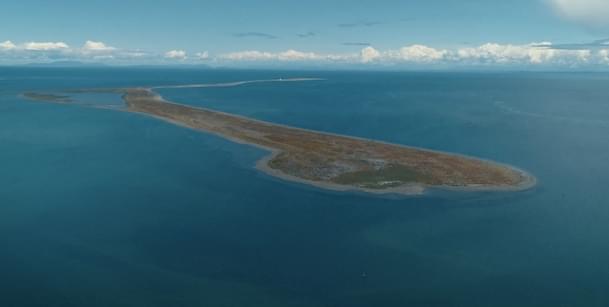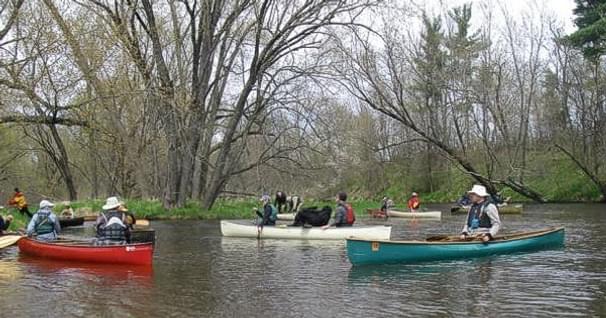Kayak Dimensions
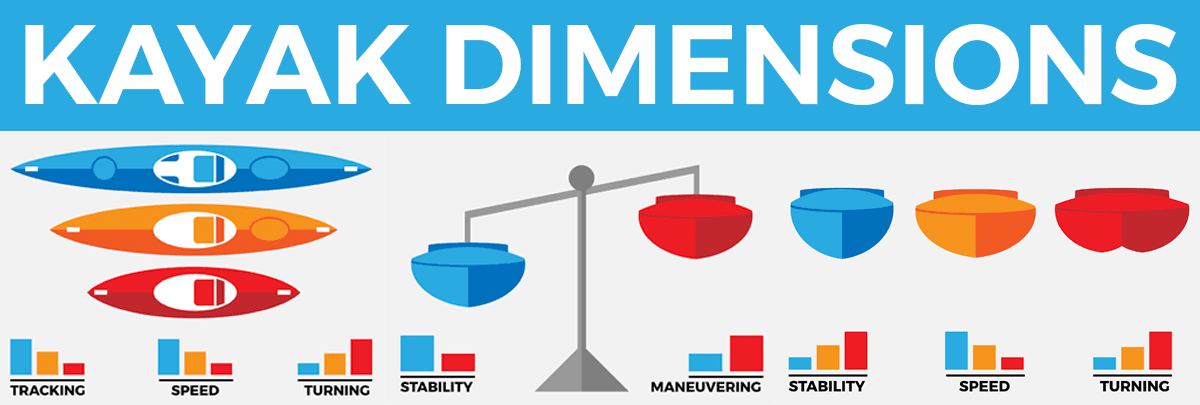
The four fundamental dimensions for a kayak are kayak length, kayak width, kayak deck/cockpit height and kayak weight. How they relate to each other and how they can affect the performance of your boat depends upon how you intend to use your kayak, what performance characteristics you need/want to utilize, and how you fit into the cockpit (for safety and comfort), as well as your overall skills as a boat handler/paddler.
Let’s look at each of those areas for the options you should consider:
Kayak Length
Generally the longer a boat is relative to its width, the faster hull speed it will attain, and it will track and glide better than a shorter, beamier kayak. Longer kayaks can be harder to maneuver than shorter boats. Length is also a consideration when higher volume/capacity is desired.

Kayak Width
A wider, beamier hull tends to be more stable and maneuver easier than a narrower hull relative to its length. The width of a kayak can also affect your paddle length selection and proper paddling style for your body structure.
When the widest part of the boat is behind the cockpit it is called “Swede” form which means a sleeker bow with clean entry and fast acceleration. A “Fish” form’s beam is widest ahead of the cockpit giving the bow more buoyancy (good for surf zone paddling) and a sleek exit through the water at the stern. Both forms can be incorporated into a variety of lengths and widths of kayak hulls
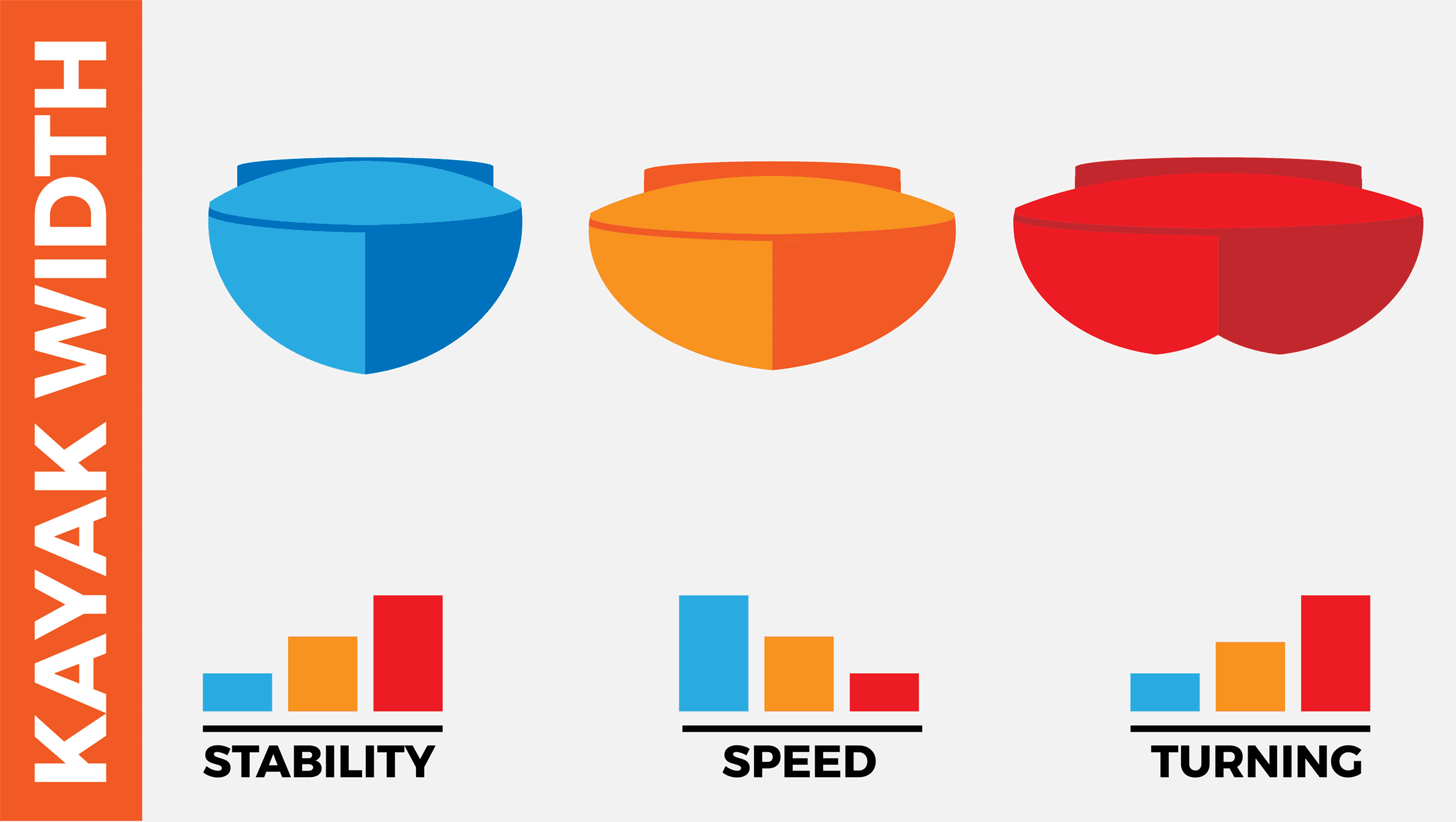
Kayak Deck/Cockpit Height
The distance from the keel to the top of the cockpit at the foredeck peak affects the overall depth of the kayak, as well as volume of the boat and cockpit. - for gear stowage and the comfort/fit of the paddler.
A larger cockpit opening accommodates a bigger/broader paddlers while a deeper deck height provides a better, more efficient seating position for a taller/long-legged paddler. Also, consider your normal paddling footwear as a raised heel on a paddling boot, in proper foot bracing position, can affect your posture and overall fit if the deck height is too shallow.
A higher-decked boat is also affected more by the wind than a boat with a lower profile.
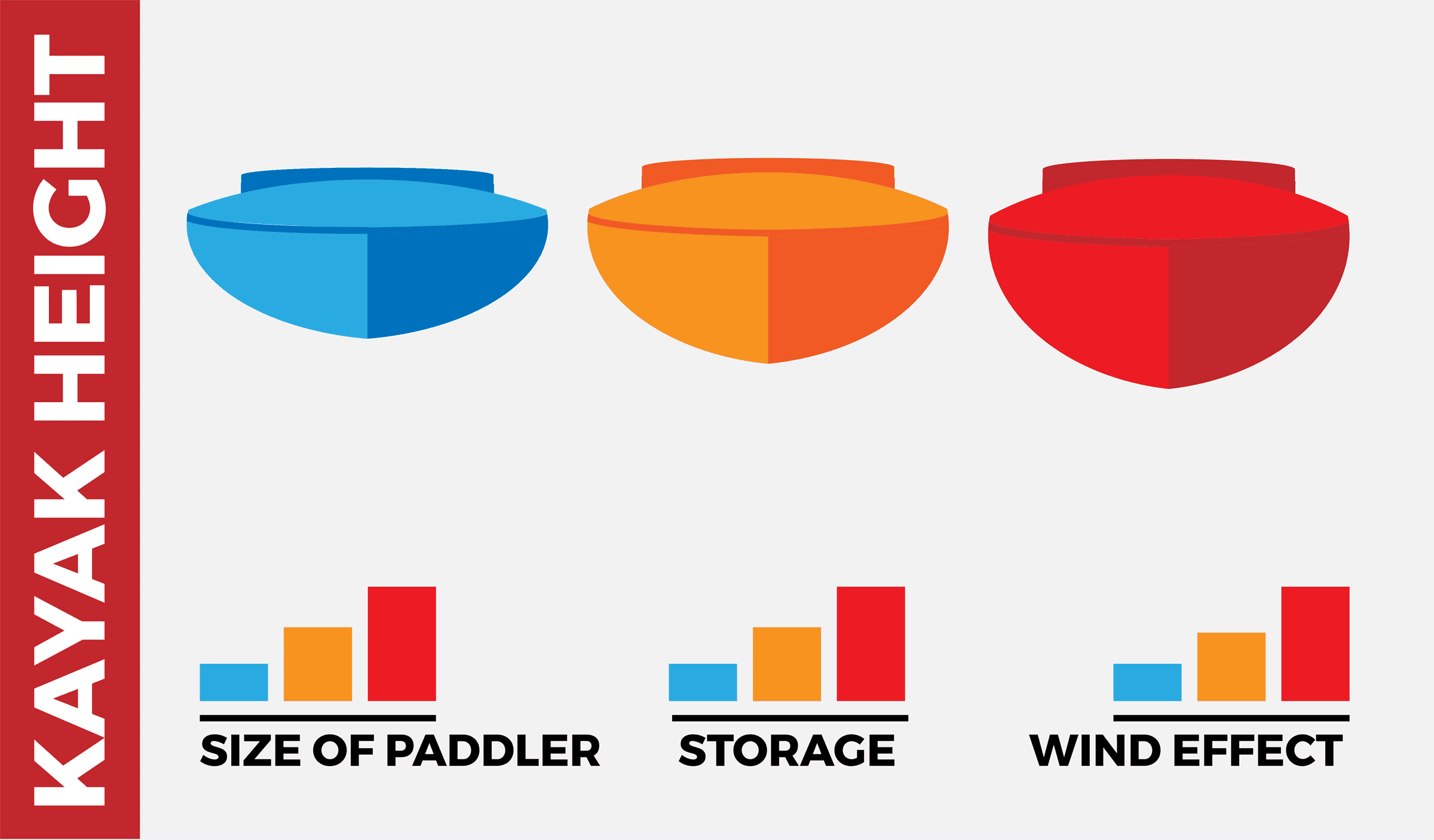
Kayak Weight
Another “dimension” to consider is weight. Several kayaks of exactly the same shape but made from different materials will each have a significantly different weight. That weight can affect the stability and ultimate maneuverability of your kayak when fully loaded. Your size and proportions should complement the size/dimensions of the boat you are paddling.
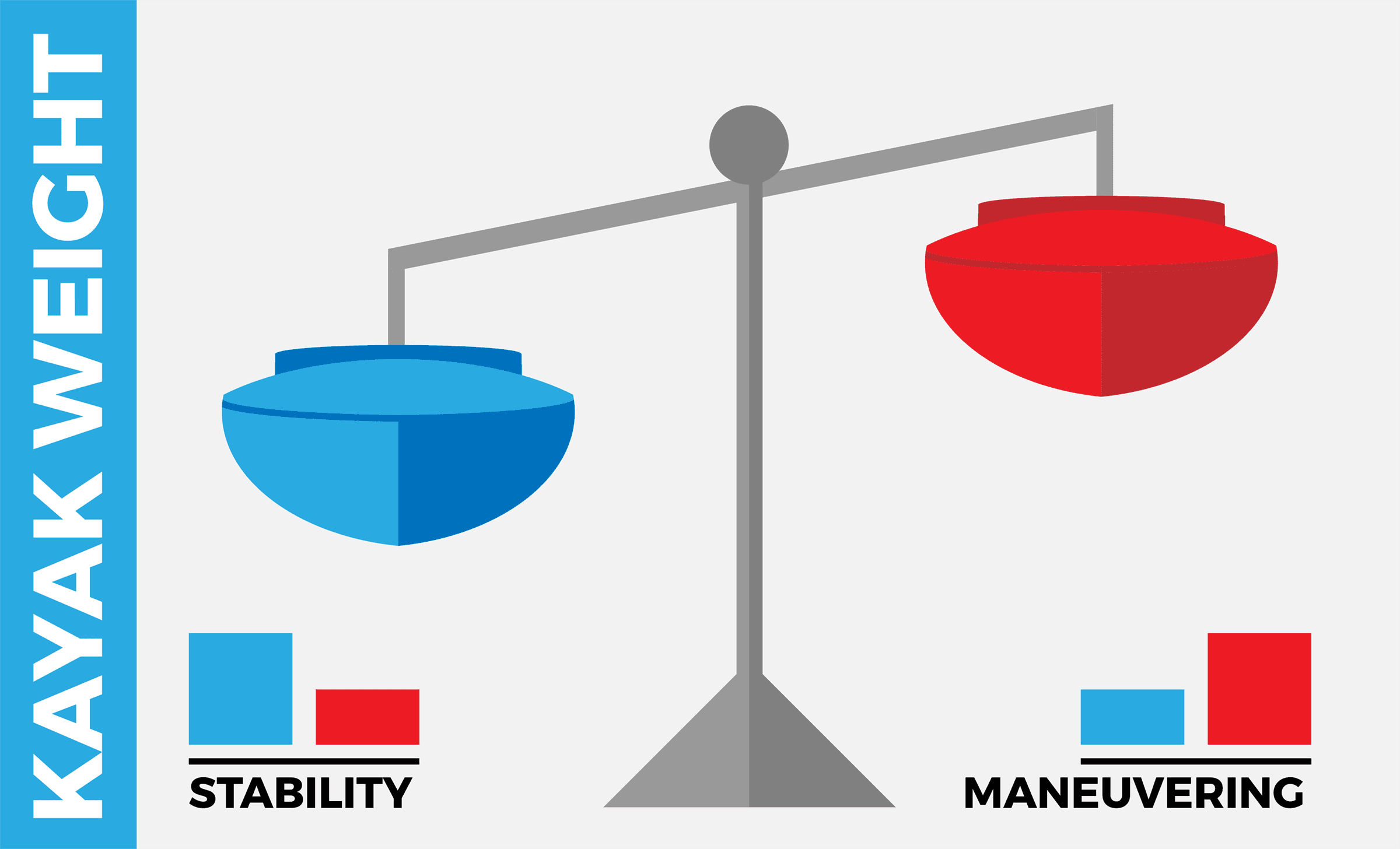
Kayak Dimensions Overview
All these dimensional considerations provide overall dynamics to the characteristics of a kayak. Factors such as your experience, the type of water in which you’ll be paddling and amount of extended paddling you may experience should all be considered as you look at the length, width and depth of a kayak.
Generally, shorter, beamier boats are best suited where a high degree of maneuvering will be required - surging down a winding river or perhaps in rocky outcroppings beyond or in the surf zone. Longer, sleeker kayaks are better for extended distances or multi-day trips where greater volume is balanced by speed and straight tracking.
Shorter and beamier recreational kayaks (including “fishing” kayaks) are more casual, floating paddle craft while the feisty maneuvering capabilities of small whitewater boats rely on their dimensions for a whole new level of performances.
A good way to appreciate the difference these dimensions can make is to participate in a demo day to test paddle kayaks of different lengths and beams. Also, for most serious beginners, it is generally better to select a boat you can grow into as you develop your kayaking skills. Once you’ve honed your skills you may realize, too, that you want to enjoy more than one style of boat to satisfy your paddling opportunities. At that point, you can use those basics dimensional considerations to expand your paddling horizons even further.
Related Articles
Ken Whiting answers the big question for new paddlers - Do you go for a canoe, a kayak, or a stand up…
Dungeness Spit from above, with the New Dungeness Lighthouse in the distance Dungeness…
Learn the full glossary of canoe terminology in this excerpt from The Complete Book of Canoeing by I.…
Earlier this year, a manufacturer of high-end composite canoes sponsored a weekend paddle down a local…

